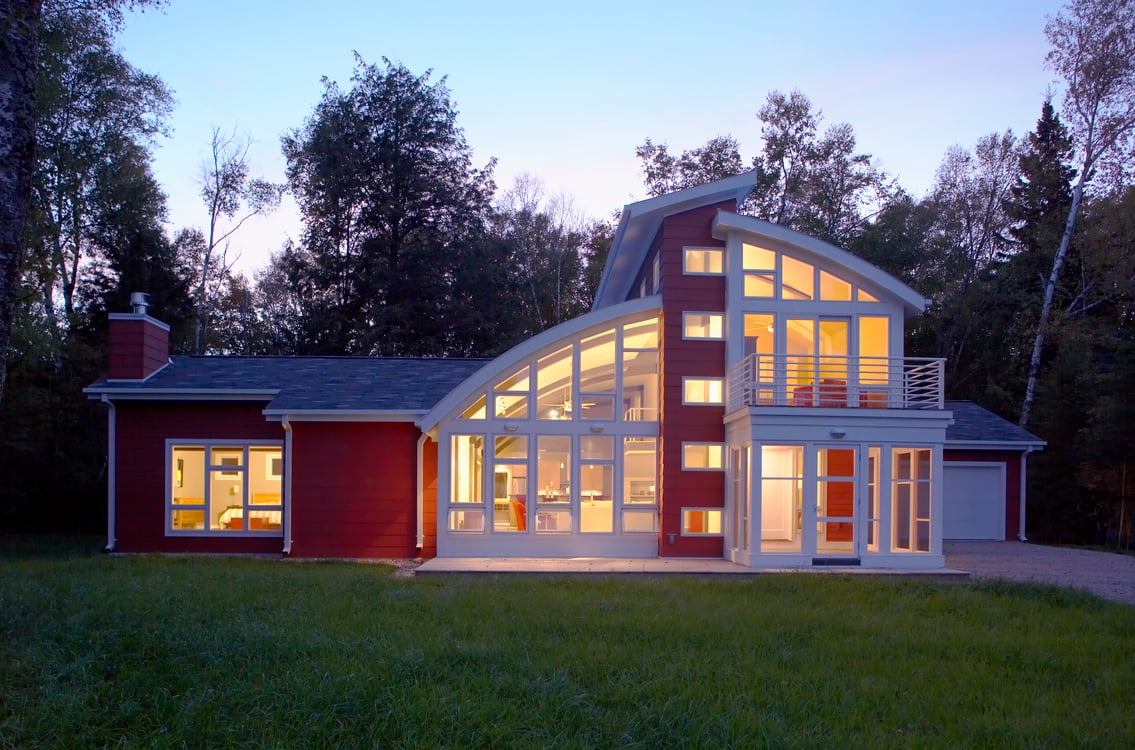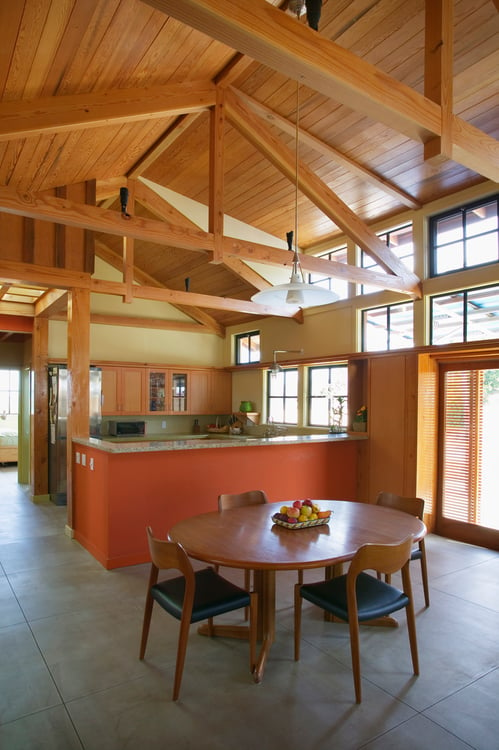The reality of the climate crisis forces architects to implement sustainable design practices and has become an essential piece of building construction.
In this blog post, we'll explore emerging methods in sustainable architecture that are striking back at the climate crisis by reducing carbon emissions while still enabling you to build captivating structures your clients will love.
By understanding green building techniques and learning more about new types of materials, you'll discover the key components in designing a successful project with sustainability firmly rooted at its core.
This article features methods used by two leaders in sustainable architecture, Nathan Kipnis, FAIA, and David Arkin, AIA.
But first, let’s establish some definitions.
WHAT IS EMBODIED CARBON?
Embodied carbon refers to the carbon emitted through the creation, transportation, maintenance, and disposal of a building’s materials and the construction processes throughout the project’s entire lifecycle. Embodied carbon is responsible for about 11% of global CO2 emissions.
WHAT IS OPERATIONAL CARBON?
Operational carbon refers to the emissions during the buildings in-use phase of its lifecycle. This includes emissions from operations such as heating, cooling, lighting, and ventilation. Operational carbon is responsible for about 28% of global CO2 emissions.

Sustainably designed Vernacular Vacation Home by Kipnis Architecture + Planning. Photograph ©2014 Wayne Cable (.com).
HOW BUILDINGS AFFECT THE ENVIRONMENT, BY THE NUMBERS
So, considering both sources, buildings are responsible for about 39% of global carbon emissions. It’s the single largest source, which may come as a surprise. Shouldn’t it be transportation, which requires the burning of fossil fuels?
In fact, according to the AIA’s Blueprint for Better campaign, transportation only accounts for about 23% of global carbon emissions, a shocking 16% less than buildings do.
Incorporating sustainable materials and building methodology has therefore never been more important if we’re to meet AIA’s 2030 commitment — and, more importantly, to meet the Paris Agreement, a multinational campaign that vows to keep Earth’s surface temperature from rising a total of 1.5 degrees Celsius since the industrial revolution.
And it’s already risen by 1 degree since then, leaving us with only half a degree Celsius before the environment is considered irreparable.
WHAT CAN ARCHITECTS DO TO HELP?
Given the numbers, architects can shift the world toward a carbon-neutral future. Many would say it’s an obligation.
Kipnis articulates that embodied carbon is where the AEC industry needs to do the most work. This is because, even though it’s a smaller portion of the total than operational carbon, it requires a much larger commitment. You can’t simply reduce embodied carbon after a building is constructed. It must be done in the planning stages, indicating that we must evolve our methods of thinking about planning buildings.
“There are very few, if any, buildings with net-zero carbon,” Kipnis said. “It’s challenging to do. Hopefully that changes in the coming years.”

Created by Arkin Tilt Architects with salvaged & reused wood. Courtesy of Ed Caldwell.
Energy modeling helps Kipnis understand energy levels very early in the planning process, so he’s able to make more informed decisions throughout the project. Here are some of the tips he lays out in a webinar for Architectural Record.
- Design as efficiently as possible, i.e. simple design and smaller conditioned area
- Detail and build a tight shell
- Energy model early and often to test design strategy options to verify the efficiency of the design, working from a baseline energy use for the specific building type
- Specify extremely efficient appliances and lighting
- Design a very efficient, all-electric mechanical system and include mechanical ERV/HRV ventilation
- Design onsite renewable energy systems to cover the remaining energy load on an annual basis. A minor level of offsite renewable energy can be included, generally limited to less than 20% of the remaining required
USE MORE BIO-BASED MATERIALS
According to Arkin, 2.16 billion tons of grain straw were grown globally in 2016, which is enough carbon storage to offset all current transportation emissions and more than enough to replace all current insulation materials.
“The potential of these bio-based materials to make an impact is significant,” he said.
Bamboo is another effective material in Arkin’s toolbox, and it can be in yours as well. There are companies that engineer bamboo into load-bearing products. Arkin pointed out Bamcore as an award-winning company that manufactures a bamboo-based stud-less wall system. Not only is this more operationally carbon-friendly than something like steel, but it also reduces cost, labor, and time requirements to assemble the structure, lowering a project’s embodied carbon.

Wood used for interior roof framing. Photo courtesy of Ed Caldwell.
Here's a list of emerging materials that architects are using to great success:

Straw bale residence by Arkin Tilt Architects. Photo courtesy of Ed Caldwell.
You can learn more about these materials in Arkin’s presentation for Architectural Record.
TAKE INSULATION MATERIAL SERIOUSLY
Architecture 2030 has a webpage called Carbon Smart Materials Palette that offers tons of information on sustainable materials. One key takeaway is that insulation materials like extruded polystyrene and closed cell sprayfoam emit lots of carbon. Insulating with straw bales, hempcrete, or other materials listed in the Carbon Smart Materials Palette is an effective way to reduce a project’s embodied carbon levels.
REDUCE YOUR USE OF CONCRETE
Concrete is responsible for a large portion of carbon emissions in the building process. The manufacturing and transportation of concrete emits over four billion tons of CO2 annually, about 8% of overall global emissions.
“Some companies are starting to inject CO2 into concrete, which causes a chemical reaction that turns the CO2 into calcium carbonate, which is limestone,” Kipnis said. “It actually makes the concrete stronger and it reduces the amount of cement used. Cement is the key issue. It takes so much energy to make the material. So, optimizing the amount of concrete you use is a key step.”
BUILDING A BETTER FUTURE
As the AIA, RIBA, Australian Institute of Architecture, and the RAIC indicate, the time to take sustainability seriously is now. Check out the organizations’ websites for more information on how you can reduce the carbon emissions of your architecture projects.

.svg)





